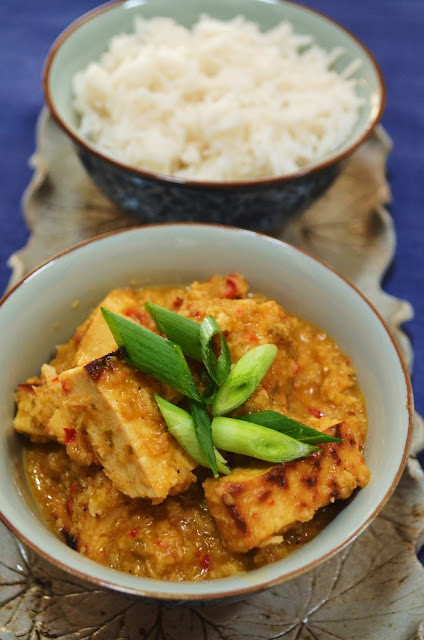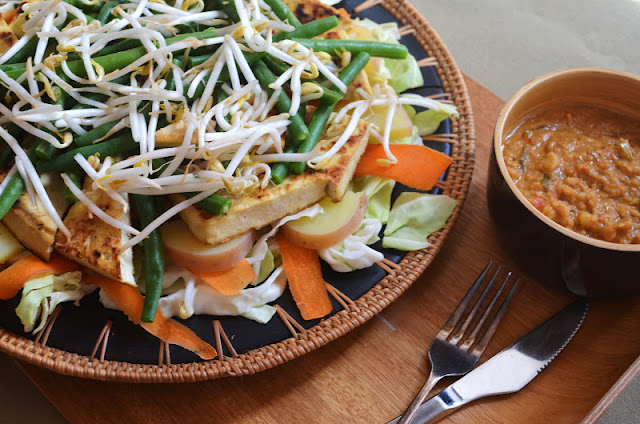Salam! Apa Kabar? I hope you've been enjoying the feast of Indonesian inspired food this month as much as I have. November has been all about Indonesia, so I'll recap all the great recipes for you! Sadly I didn't get to make all the ones that I had planned, I actually went out to China Town and especially tracked down some pandan extract to use in a couple of recipes - and then I didn't get time to make them! So you'll probably be seeing some pandan recipes appearing on the blog fairly soon.
Ingredients of the month: coconut, chilli, green beans, shallots and peanuts!
~Savoury~
.JPG) |
| Gado Gado |
A classic Indonesian salad of crisp vegetables covered in spicy peanut sauce. This salad was a huge hit with dinner guests, and very quick to prepare. Check out the recipe here.
 |
| Acar Kuning |
Brightly coloured fresh vegetables cooked in a zingy sauce which is hot, sour and sweet? Oh, and yellow! This stir fry vegetable dish is quick and easy to make and well worth the (minimal) effort. Check out the recipe here.
.JPG) |
| Rujak |
Rujak is an Indonesian fruit salad with a spicy chilli syrup dressing. Right up my alley, but I could never find anyone to tell me if it was meant to be served as a savoury dish or as a sweet? I took a punt with mine and served it with the savoury, hence my including it in here! But if anybody knows then I'd love you to let me know! Check out the recipe here.
.JPG) |
| Lawar Ayam |
This fresh and light bean and coconut salad was made possible by my amazing coconut grater that I bought in Sri Lanka. I love it, even if it looks a bit like a torture implement (photos in the post). I'm glad, because this salad was worth a bit of effort. Check out the recipe here.
 |
| Rendang Tofu |
My version of a classic Indonesian curry, I made some changes to the traditional methods and the result was fantastic. This meal is going into my regular meal rotation! Check out the recipe here.
~Sweet~
.JPG) |
| Triple Threat Coconut Cake |
.JPG) |
| Longton Paris |
 |
| Jus Alpukat |
A fresh avocado milkshake was recommended to me as a must try of Indonesian recipes - although I have to admit some apprehension. I wasn't sure if I was going to like it, and the first taste was a bit of a hurdle. But after than I was draining the glass and going back for more. It's perfect for the hot summer we're heading into! Check out the recipe here.
So - what did you think of Indonesia Month? What looks the best?
So, What Next?
Next month I have had a reader request to feature the cuisine of Southern USA. I'm glad he specified, because just doing "USA" would be a big task! I'm sure my American readers will enjoy seeing what I come up with for this one!

.JPG)






1.jpg)








.JPG)



















